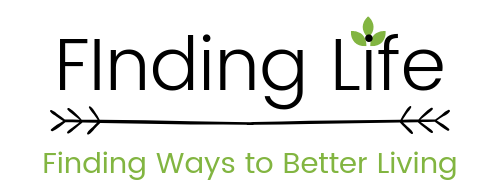Now that Mr. Finding and I have a bit more financial education under our belts, we have put together an investment strategy to help us reach financial independence.
To understand our strategy it’s important to note that we each have our own checking, retirement, credit card, and taxable accounts, so for each area you will see us explain both of our contributions.
We hope this investment strategy will either help you understand some options for what you can do as well or perhaps you will see some gaps in our plan and provide some advice.
Finding Life Investment Strategy
- Emergency Fund
- Debt
- 401k/TSP Contributions
- HSA
- IRA
- Taxable Accounts
1. Save for Emergency Fund
The first part of our strategy is saving for our emergency fund.
We each have our own emergency funds, which are a mix of savings in our checking accounts and available credit on credit cards.
Our goal is to have enough liquid funds available in our checking accounts for a small emergency with a car, family member, or repair, etc. We can then rely on available credit cards for intermediate funds while we wait to get paid or pull some extra funds from our taxable accounts if needed.
This is one of those areas where emotion comes into play. The amounts that we have in our checking accounts will hold us over for about 6 months. Although we’ve played with the numbers and read countless blogs on how much to keep in your emergency fund and why, our 6 month amount “feels right.” We know there are other options (credit cards and taxable investments) backing it up, so we feel reassured and have settled on this plan.
2. Pay down debt
We are very fortunate in that we only had some student debt to pay off. We have never carried credit card debt, don’t have a mortgage (we rent), and have not incurred other versions of debt.
As of the end of 2018 we officially have no more student debt, so we are debt free!
3. Max out 401k/TSP
Mr. Finding works for the government and contributes to a TSP with a total match of 6%. He also has a corporate 401k from an old employer that is through Fidelity Investments.
Mrs. Finding has a company match of 3% for her 401k plan through John Hancock Investments.
We are both putting in enough money to meet the $19,000 IRS maximum contribution in 2019. This means we are putting in more than just meeting our company match.
These are all invested in low cost index funds.
4. Max out HSA
Mrs. Finding has an HSA through her work as well, the awesome “ultimate retirement account” MAD Fientist has written so lovingly about.
This is also being maxed out ($3,500 for 2019) by taking a little payment from each paycheck and is invested in low cost index funds.
Mr. Finding’s health insurance does not operate an HSA, but he does contribute to an FSA for pre-tax savings.
5. Max out Roth IRA
After the 401k/TSP and HSA have been automatically deducted, we also contribute to individual Roth IRAs.
This is one area that could be more streamlined and we are open for ideas!
Right now, we save the maximum contribution amount ($6,000 for 2019) in our checking accounts until we deposit the total amount (sometime before the deadline).
These Roth IRA accounts are held at Wells Fargo for Mrs. FInding and Betterment for Mr. Finding, something we are looking to adjust (more on that later!).
6. Invest additional savings in Betterment and Vanguard Funds
After these more base retirement savings, we still have some additional funds (thanks to frugal living) that we invest using Betterment and Vanguard. Funds are swept weekly from our checking accounts and invested automatically based on the allocation settings we have set.
We have a few holdings in low cost ETFs through Vanguard including a total international stock market index, an S&P 500 index, and a Nasdaq index.
This is one area that may need review in 2019. We like the tax loss harvesting option, the ease of use, and ability to adjust our allocation strategy quickly in Betterment, but the fees may not be worth it anymore now that we have a better sense of what we are doing.
Regardless, we will keep our taxable investments in low cost funds, but where they are held (Betterment vs. Vanguard) is something we may not be maximizing.
What’s Missing in This Strategy?
Over the past year we have worked to educate ourselves on investing, frugality, and life optimization, but we know there are still some pieces we can improve upon.
Here are some things we still want to learn more about/change in 2019:
- Should we move Mrs. FIndings Roth IRA from Wells Fargo to Vanguard for lower fees?
- Should we both move our taxable accounts from Betterment to Vanguard to avoid fees? Or keep it there for the tax loss harvesting and ease of allocation?
- What should we do with our side hustle- should it become an LLC to reduce taxes and allow for a Solo 401k?
- Should we add rental property to our investment plan? If so, where to save the money for a down payment?
- Can Mr. FInding have a TSP and a solo 401k?
- Would it be better to consolidate our his and her funds for any reason?
What else do you see is missing from our overall strategy? We would love your feedback on what we can change or what you are doing and why in the comments!





Comments
Debt Free, Great for you!
You all are doing so well keep it up.
Author
Hi LloydG! Thanks so much for the encouragement! We are trying our best, do you have any advice for us as we continue on this path?